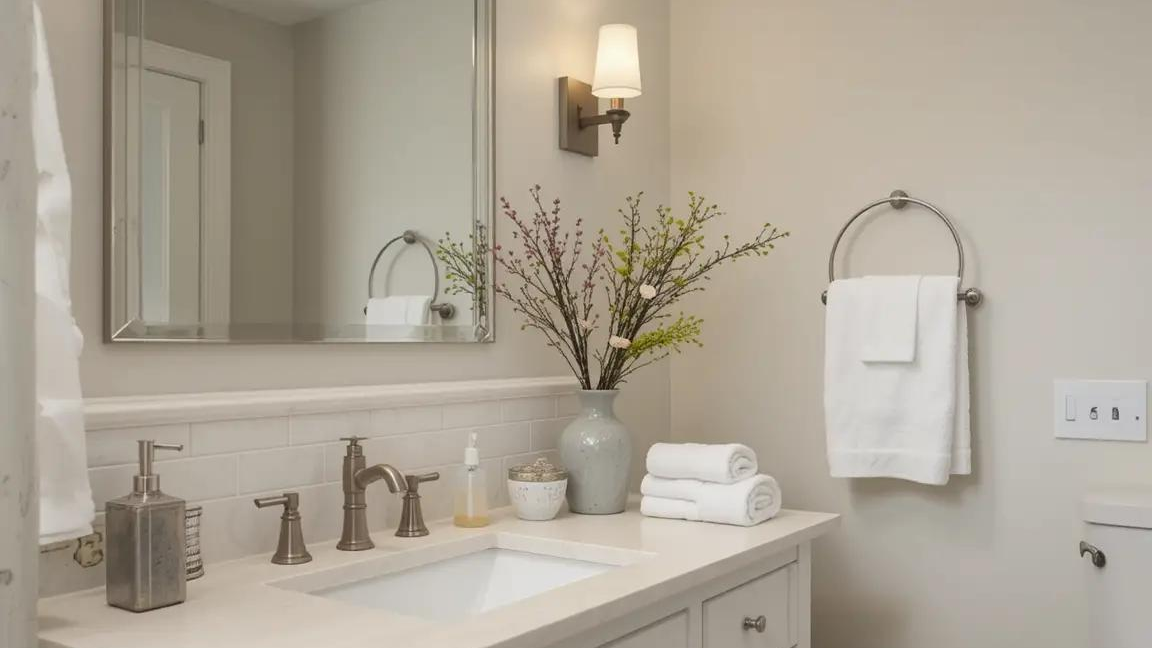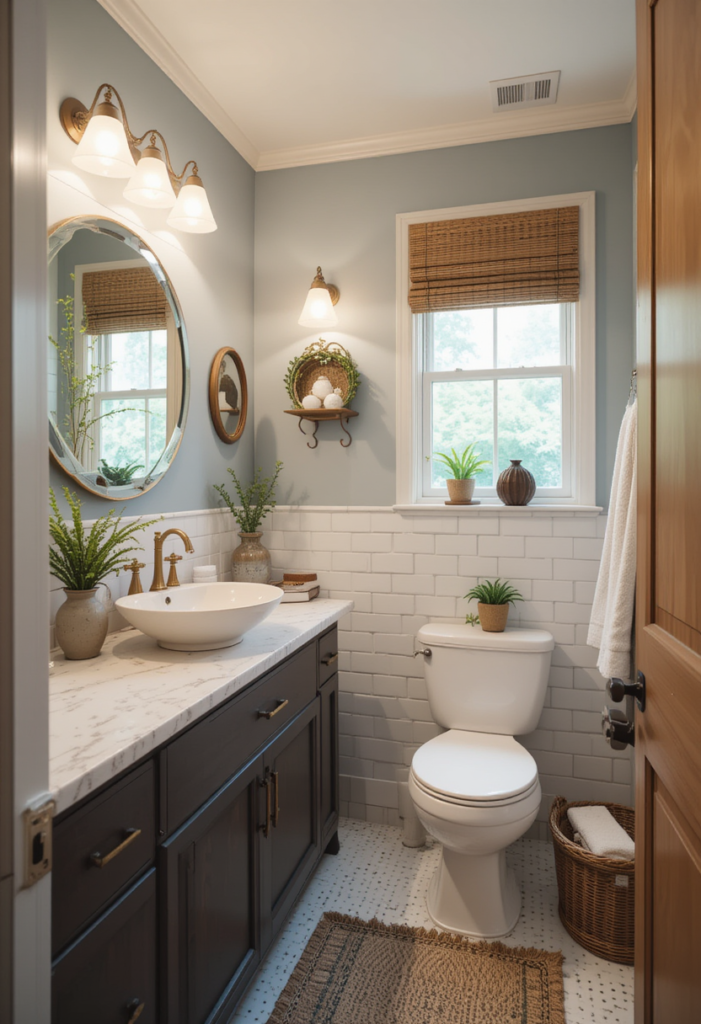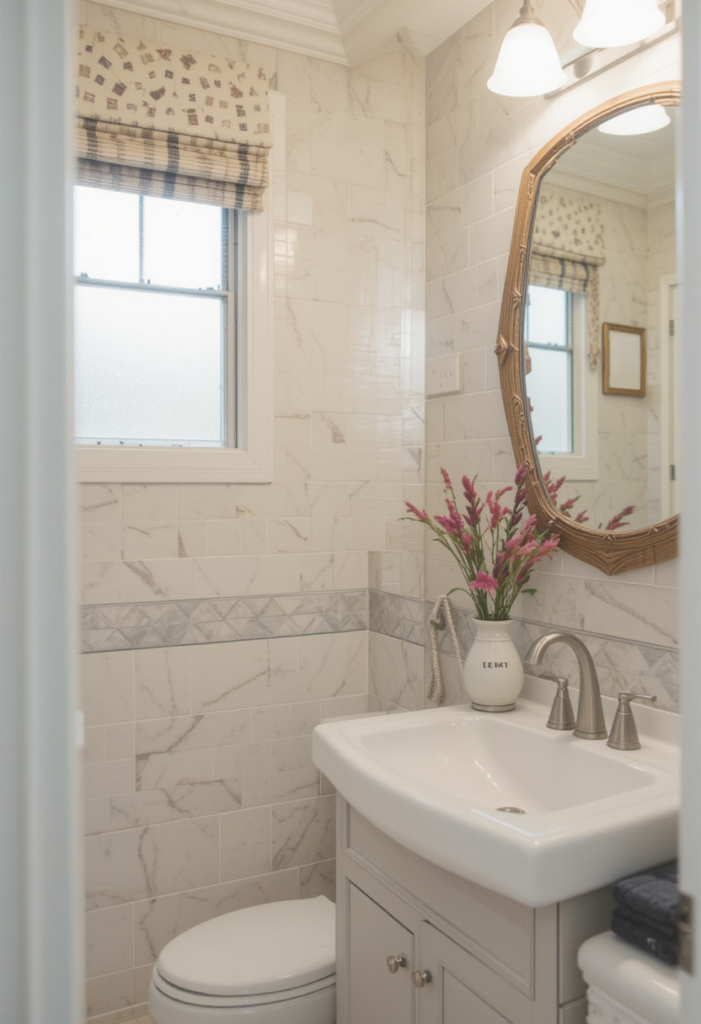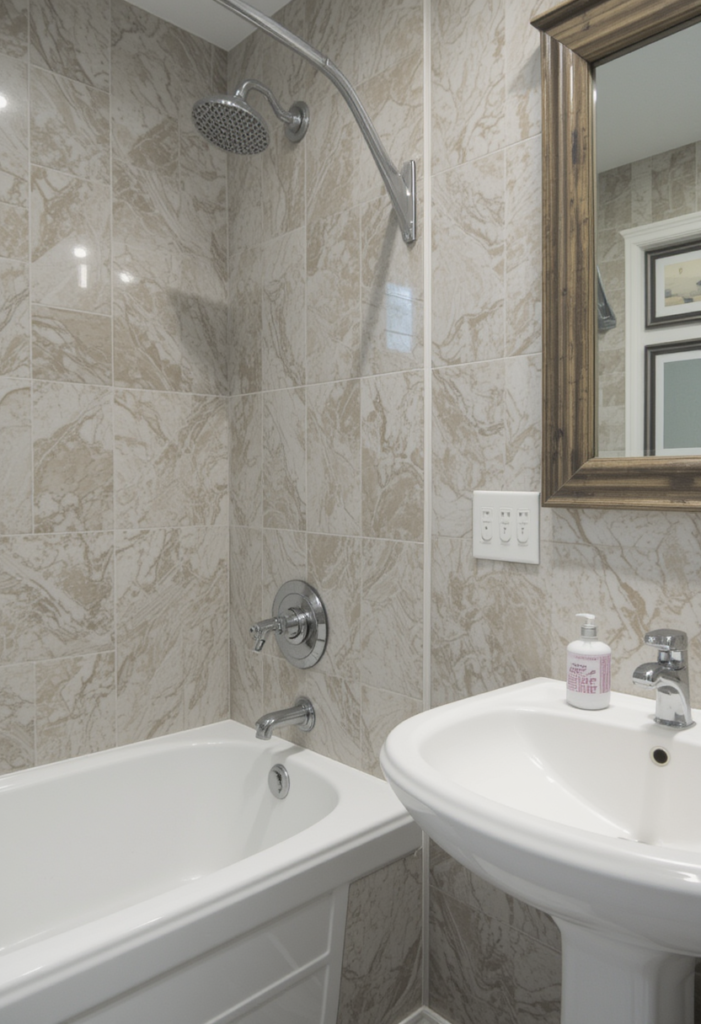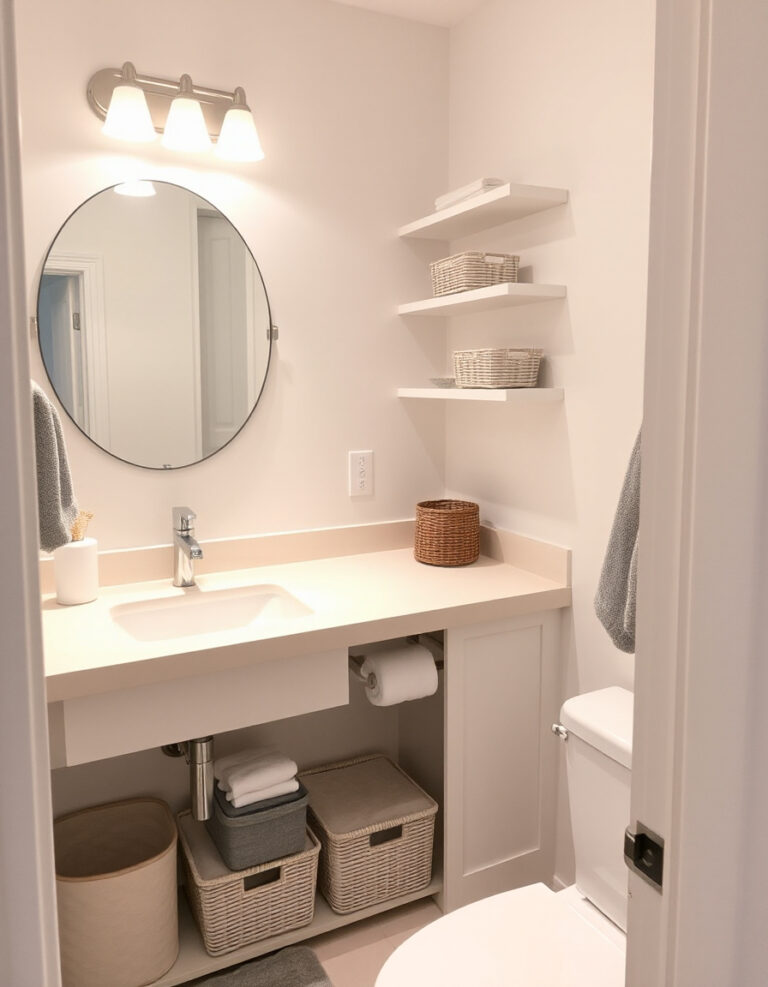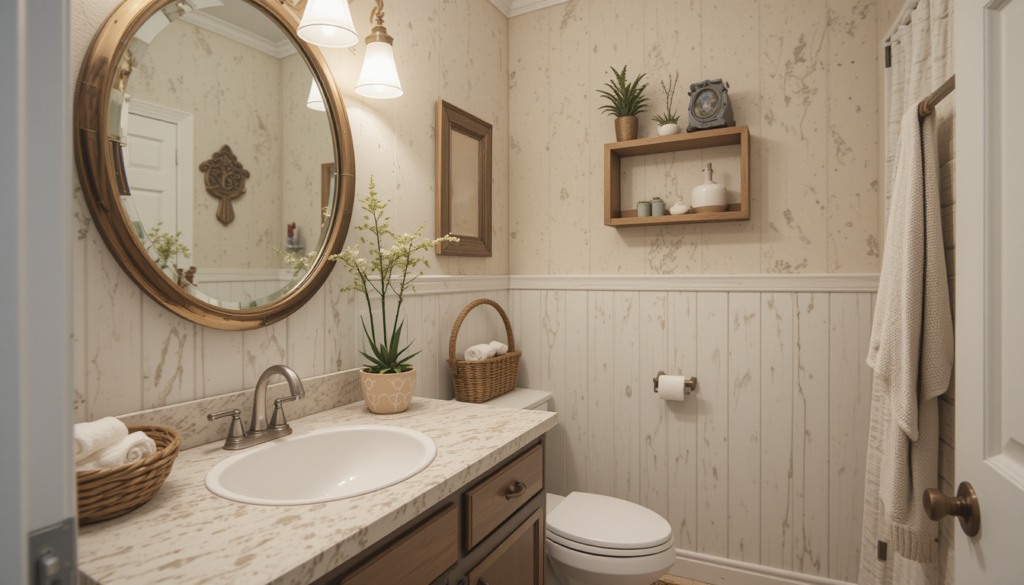
A DIY bathroom remodel is the perfect opportunity to transform your space into a functional and stylish retreat. Whether you’re working with a small bathroom or tackling a full overhaul, the key to success lies in careful planning and smart decision-making. To help you make the most of your efforts, here’s a detailed guide on what to do during your DIY bathroom remodel.
DIY Bathroom Remodel: What to Do
1. Plan Your Budget
Every successful DIY bathroom remodel starts with a well-thought-out budget. Take the time to determine how much you’re willing to spend and divide that amount among the different aspects of your remodel, focusing on high-impact areas such as flooring, fixtures, and lighting, which often set the tone for the overall design. Consider whether you want to splurge on a luxurious vanity or stick with a budget-friendly alternative that still offers functionality. Save on less critical elements like accessories, wall décor, or paint. Planning your budget helps you avoid overspending and ensures your finished bathroom reflects your vision without financial regrets.
2. Measure Twice, Cut Once
Accurate measurements are non-negotiable in a DIY bathroom remodel. Whether you’re installing a new vanity, replacing tiles, or cutting a countertop, precision ensures a seamless fit and professional-looking results. Take the time to measure all dimensions twice—or even three times—to avoid mistakes, especially in tricky areas like custom shelving or awkward corners. Misjudging a cut can lead to wasted materials and extra expenses. By double-checking measurements, you save time, money, and frustration during your project.
3. Focus on Functionality
While aesthetics are important, the functionality of your bathroom should be a top priority in your DIY bathroom remodel. Consider your daily routine and identify areas that could benefit from upgrades. You might add a double sink if multiple people use the bathroom simultaneously or improve lighting to make the space more inviting and practical. Simple upgrades like installing better storage solutions—such as recessed shelving or built-in cabinets—can make a world of difference. Keep in mind that a well-designed bathroom not only looks great but also makes everyday tasks easier.
4. Choose Durable Materials
Bathrooms endure constant exposure to moisture, steam, and heavy foot traffic, making durable materials essential for your DIY bathroom remodel. Opt for waterproof flooring, such as ceramic tiles or luxury vinyl planks, to prevent warping and water damage. Consider mildew-resistant paint for walls and ceilings, specially formulated to withstand the humid bathroom environment. Solid-surface countertops, stone tiles, and quality fixtures are all smart investments that combine durability with a timeless aesthetic. Selecting the right materials ensures your remodeled bathroom stays in excellent condition for years to come.
5. Research Permits and Codes
Before you dive into your DIY bathroom remodel, research local building codes and permit requirements. While many small updates, like painting or swapping out light fixtures, won’t require a permit, major changes—such as moving plumbing or electrical systems—might. Working without the necessary permits can lead to fines and complications if you ever decide to sell your home. Stay informed to avoid these headaches and ensure your work meets safety standards. This extra step might seem tedious, but it’s well worth the peace of mind.
6. Invest in the Right Tools
Having the right tools on hand can make or break your DIY bathroom remodel. Basic tools like a tape measure, level, and screwdriver set are essential, but consider renting or buying specialized equipment for specific tasks to make your work more efficient and professional. A tile cutter is invaluable for laying new floors or backsplashes, while a wet saw ensures precise cuts for stone or ceramic materials. Other must-have tools include a power drill for installing fixtures, a caulk gun for sealing edges, and a stud finder for securely mounting heavy items like vanities or shelving. Equipping yourself properly is one of the smartest investments you can make, saving you time and frustration while helping you achieve stunning, professional-looking results.
Upgrade your efficiency with helpful storage ideas from 20 Clever Laundry Room Storage Solutions for Small Spaces.
DIY Bathroom Remodel: What Not to Do
While a DIY bathroom remodel can be an exciting project, there are some common mistakes you’ll want to avoid to ensure a smooth and successful renovation. By knowing what not to do, you can save time, money, and frustration, while achieving the bathroom of your dreams. Here are the key things to keep in mind during your remodel.
1. Don’t Skimp on Waterproofing
Cutting corners on waterproofing can lead to costly repairs down the line. Invest in quality waterproofing materials, especially in areas like showers and around sinks where moisture is a constant concern. A good waterproof membrane and properly sealed grout are essential to protect against leaks and mold growth. Skipping these important steps might save you a little money initially, but it could result in significant damage over time, costing you far more to fix.
2. Avoid Moving Plumbing
While it may be tempting to relocate the shower or toilet to give your bathroom a new layout, moving plumbing is often expensive and complicated. Unless absolutely necessary, try to work within the existing layout to save both time and money. Relocating plumbing requires advanced skills and could involve additional permits, inspections, and possibly hiring a plumber, all of which can quickly drive up costs and lengthen your project timeline. Stick to your current setup whenever possible to simplify the process.
3. Don’t Overlook Ventilation
Proper ventilation is essential in a bathroom to prevent moisture buildup, which can lead to mold and mildew. Ensure that your exhaust fan is in good working order or consider installing one if it’s missing. A well-ventilated bathroom not only stays fresh but also reduces the long-term maintenance headaches that come with poor airflow. Without adequate ventilation, you risk damaging your walls, ceiling, and even the structural integrity of your home. Don’t overlook this crucial step in your remodel.
Discover how smart budgeting can also transform your kitchen with 23 Kitchen Decor Ideas to Transform Your Space.
4. Don’t Ignore Safety
DIY bathroom remodeling involves using power tools, lifting heavy materials, and handling potentially hazardous substances like adhesives and paints. Always wear the appropriate safety gear, including goggles, gloves, and a mask, and follow all manufacturer instructions to ensure your safety. If a task feels beyond your skill level or you’re unsure about how to proceed, don’t hesitate to call in a professional. It’s better to ask for help than to risk injury or further complicate your project.
5. Don’t Rush the Process
Patience is key in any DIY remodel. It’s important to allow enough time for each phase of the project, from planning and demolition to installation and finishing touches. Rushing can lead to mistakes, which often end up taking longer to fix than if you had just taken your time in the first place. Whether it’s waiting for grout to set or allowing paint to dry fully, don’t cut corners by rushing through steps—proper timing and attention to detail are what make a DIY remodel successful.
Frequently Asked Questions (FaQs)
How to DIY Bathroom Remodel?
To start your DIY bathroom remodel, plan a budget and prioritize high-impact areas like flooring and fixtures. Measure carefully, choose durable materials like ceramic tiles and mildew-resistant paint, and ensure you have the right tools. Focus on functionality, adding features like better storage or lighting, and take your time to avoid mistakes.
How to Remodel a Bathroom DIY?
For a DIY bathroom remodel, set a budget, measure your space, and choose materials that can withstand moisture. Tackle small tasks like updating faucets and lighting before moving on to bigger projects like new flooring or a vanity. Make sure to have the necessary tools and follow safety guidelines to complete your DIY bathroom remodel successfully.
How Long Does a DIY Bathroom Remodel Take?
A DIY bathroom remodel can take anywhere from a weekend for small updates to 3–6 weeks for larger projects. The time depends on tasks like demolition, installation, and drying time for materials. Take your time to ensure each step is done properly for the best results.
How Long Does It Take to Remodel a Bathroom DIY?
A DIY bathroom remodel usually takes 3 to 6 weeks, depending on the complexity. Small updates may only take a few days, but full remodels involving flooring, tile, or plumbing can take longer. Factor in time for preparation, installation, and curing of materials.
How to Remodel Bathroom DIY?
Start a DIY bathroom remodel by planning your budget, measuring your space, and selecting durable materials. Focus on key areas like flooring and fixtures. After demolition, install new features like a vanity or tiles. Don’t rush—take your time for a successful DIY bathroom remodel.
How to Remodel a Small Bathroom DIY?
In a DIY bathroom remodel for a small space, choose compact fixtures and maximize storage with vertical shelving. Light colors and mirrors help create the illusion of space. Use durable materials and avoid overcrowding to make the room functional and stylish.

